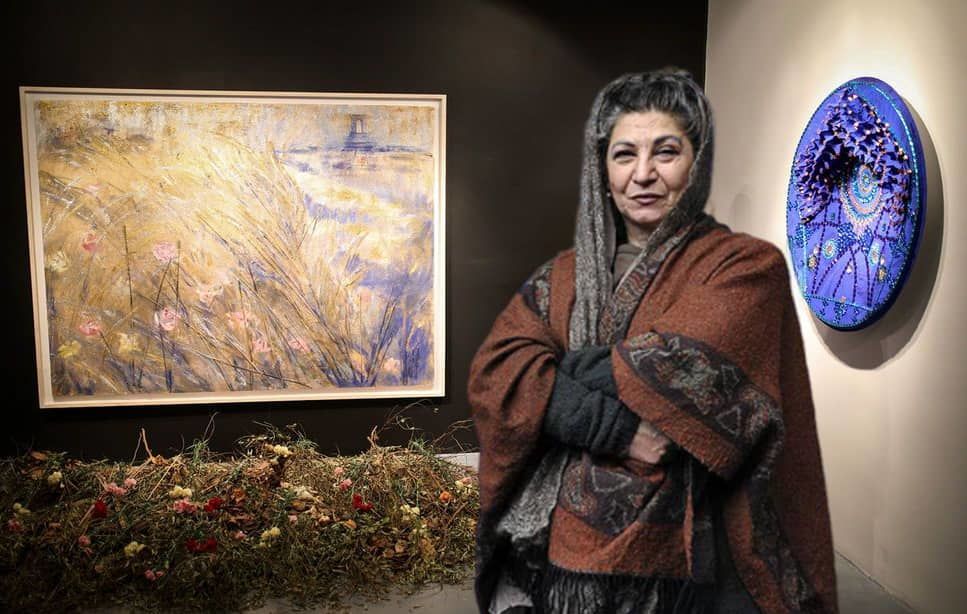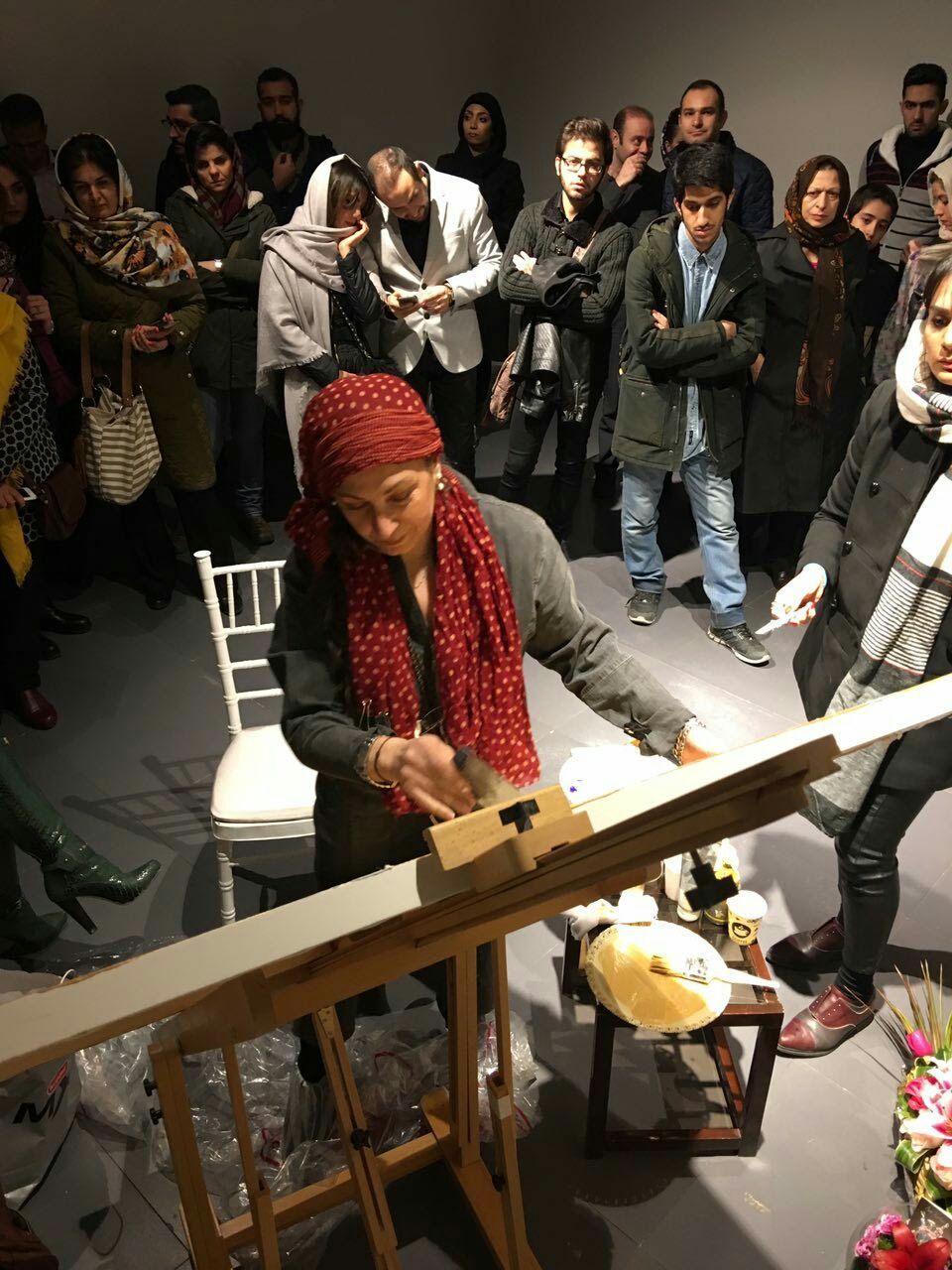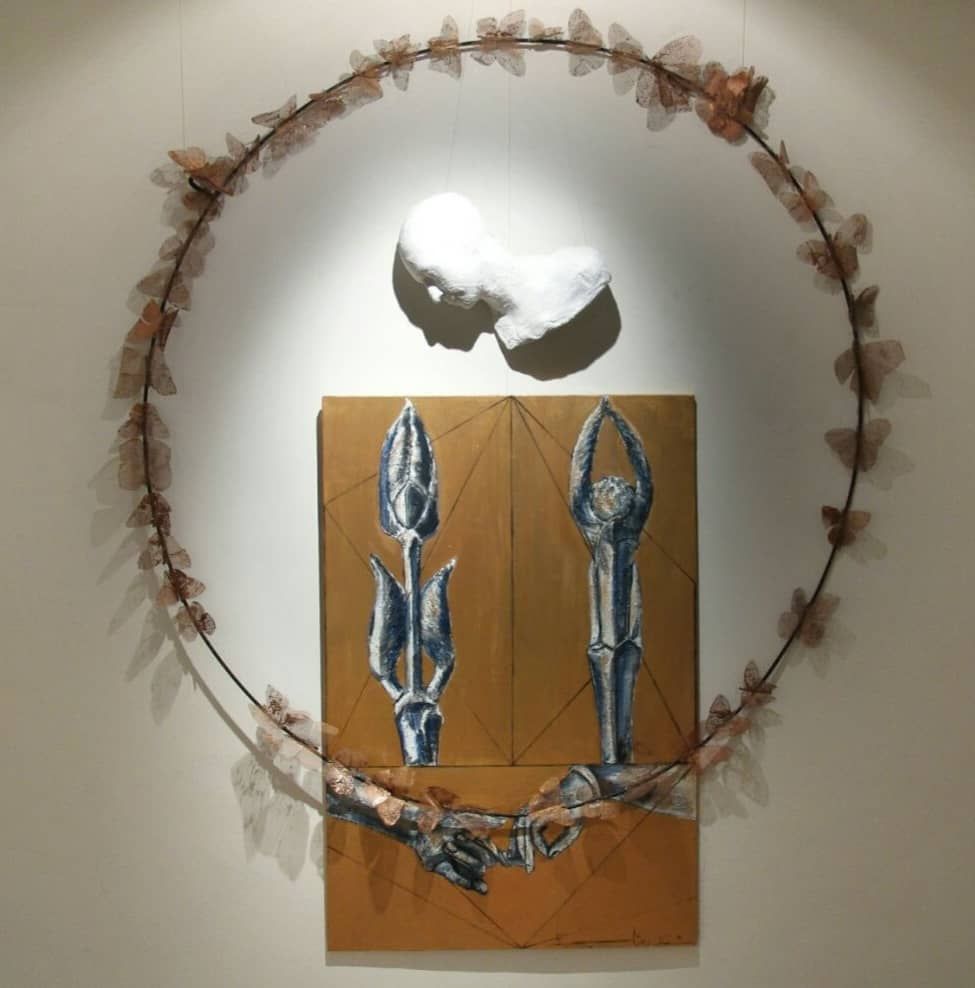Shahnaz Zehtab; From painting and installation to quantum physics

As her work evolved, Zehtab began exploring new forms of artistic expression beyond traditional painting. She delved into installation art, incorporating a range of materials such as sculpture, found objects, recycled elements, light, and music. These installations allowed her to explore themes of time, space, and environment in new ways. She has noted that her aim was to go beyond the canvas and create immersive environments for her audience.
Iran Art: Born in Tehran in March 1959 (1338 AH), Shahnaz Zehtab (Full Name: Zahra J. Zehtab) is a visual artist, educator, writer, and former board member of the Iranian Painters' Association. She co-founded the +30 group, one of the first artist collectives formed after the Iranian Revolution. She has also been an honorary member of the Visual Arts Association and managed Farda Art Magazine, a publication dedicated to the visual arts in Iran. In addition, she spent eight years involved in research and journalism at the Tehran Museum of Contemporary Arts.
Zehtab grew up in an artistic family. Her parents, Soudabeh Daruee and Mohsen Zehtab, met while attending acting classes at the Barbad Society Theater. Her mother acted as the female lead in a film and presented on Tehran Radio, though she later shifted her focus to fashion design. Her father continued acting until after their marriage, when, out of respect for his wife’s decision to step away from performing arts, he took a break. In 1969, he was invited by director Sirus Afhami to act in the Iranian TV series Pahlavanan, which marked his return to acting until the 1990s.Growing up in this environment, Zehtab developed a natural interest in the arts. Initially drawn to poetry, her focus later shifted to painting and drawing. As part of the first generation that experienced Iran’s Cultural Revolution, her path was interrupted for nearly a decade. Still, her dedication to visual arts remained, and she eventually returned to pursue formal education in the arts, studying with renowned artist Aydin Aghdashlou before earning her master’s degree.

One of the recurring motifs in Zehtab’s work is the depiction of flowers, particularly the lotus. The flower often symbolizes the ancient Iranian goddess Anahita, associated with water, fertility, and women. In her work, Anahita represents feminine strength and resilience, themes that have deep roots in Iranian culture. Anahita also appears in her post-Islamic interpretations, where she is known by names such as "Baghdukht" or "Bidukht" in the local beliefs. Zehtab’s artistic explorations emphasize the enduring influence of these cultural symbols, which connect Iran’s ancient past with more recent historical periods.
Over the course of her four-decade career, Zehtab’s work has been shaped by the political and social shifts in Iran, particularly in the aftermath of the Iranian Revolution. She has expressed concern about how "official art" during this period limited the freedom of thought in artistic creation. By 1998, with changes in the political atmosphere, Zehtab and other artists were able to reintroduce contemporary approaches to Iranian society. At that time, many artists, including Zehtab, drew on traditional Iranian culture and Islamic art forms, particularly geometric patterns and architectural motifs, to express their visions. Zehtab has long been interested in philosophy, mythology, and symbolism, themes that have deepened her artistic practice over the years. A significant part of her work is inspired by the goddess Anahita, whose role as the "Mother of Waters" symbolizes life, growth, and purity. The lotus flower, in particular, has become a central motif in Iranian art, But she has used mythical flowers in her art has used with this concept to respect the value of women in Iran. representing the powerful role of women in Iranian society. This symbol is not only important in pre-Islamic Iran but has also persisted in post-Islamic interpretations.

As her work evolved, Zehtab began exploring new forms of artistic expression beyond traditional painting. She delved into installation art, incorporating a range of materials such as sculpture, found objects, recycled elements, light, and music. These installations allowed her to explore themes of time, space, and environment in new ways. She has noted that her aim was to go beyond the canvas and create immersive environments for her audience. Despite this shift, she continued to incorporate elements from traditional Iranian art, including mandalas and geometric patterns.
Zehtab's studies of Eastern philosophy and Islamic art led her to consider the connections between intuitive artistic expression and geometry. Her curiosity extended to scientific studies, particularly the work of John Reid, who used a cymascope to visualize water vibrations. These patterns, which resembled the geometric motifs found in Islamic art, became a subject of her artistic investigation. This blend of scientific and artistic exploration led to her most recent solo exhibition, where she explored the relationship between Iranian architecture, symbolic motifs, and the scientific study of water vibrations. In recent years, Zehtab has expanded her focus to include concepts from quantum physics, particularly the theory of relativity and the idea of parallel worlds. These scientific theories have influenced her artistic vision, leading her to create works that explore the intersections of art, science, and metaphysical ideas. Through her work, she aims to bridge the gap between these fields and present new ways of understanding the world.

Zehtab’s career includes more than 100 solo and group exhibitions both in Iran and internationally. Her works have been shown in prestigious venues such as the Tokyo Metropolitan Museum (2002), the Paris Triennial (2002), and the Planet Earth Gallery in Japan (2002). She has also participated in exhibitions at the First Dubai Visual Arts Festival (2005), the Beijing Expo (2006), and the Meridian Art Center in Washington D.C. (2007). Other exhibitions have been held in cities like New York, Kansas, New Mexico, Los Angeles, Dhaka, Patras, and Lisbon. Her works are part of several permanent collections, including those of the Tehran Museum of Contemporary Art, the Imam Ali Museum, and Iran’s Ministry of Foreign Affairs. In addition, her art has been featured in the Tehran Auction.
Over the years, she has received numerous awards, including a medal from the Association of Iranian Painters, as well as various honorary diplomas recognizing her contributions to the arts. In addition to her exhibitions, Zehtab has dedicated much of her career to teaching and mentoring younger artists. As a lecturer at various Iranian art universities, she has shared her knowledge and experience with students, encouraging them to explore both traditional and contemporary approaches to visual art. Her involvement in the +30 group and the Iranian Painters' Association has further supported the development of new artistic movements in postrevolutionary Iran.

Zehtab’s body of work is not just a reflection of her personal journey but also a broader exploration of the role of women, culture, and history in shaping contemporary Iranian art. Her approach to blending traditional symbols with modern techniques, along with her interest in science and philosophy, offers a unique perspective on the evolving art scene in Iran and beyond. While her artistic practice continues to evolve, her commitment to exploring the intersections of culture, history, and innovation remains central to her work.

